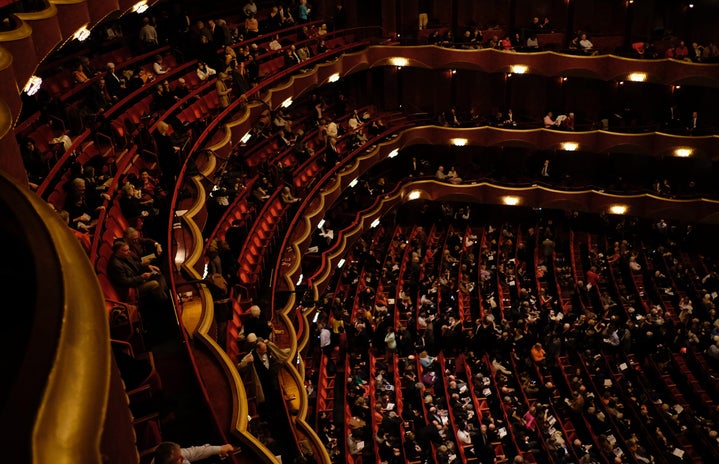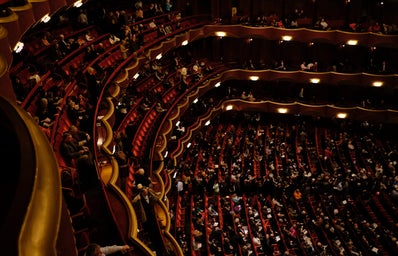Earlier this month, I was having dinner/pretend study session with one of my roommates and, while browsing something somewhere on the internet, I came across a poet I used to love when I was in high school. I then told my roommate that if I could invite anyone in the world, dead or alive, to a dinner party at my house, it would be her.
One thing led to another and we both ended up with a list of potential people we would invite over. Behold: my dream dinner:
- Sor Juana Inés de la Cruz (dead)
-
A self-taught scholar and student of scientific thought, philosopher, composer, and poet of the Baroque school, and Hieronymite nun of New Spain. She was known as a nun who demonstrated the courage to challenge opinions and speak out for her beliefs.
- Milton Friedman (dead)
-
An American economist who received the 1976 Nobel Memorial Prize in Economic Sciences for his research on consumption analysis, monetary history and theory and the complexity of stabilization policy.
- Mother Teresa (dead)
-
Known in the Roman Catholic Church as Saint Teresa of Calcutta, was an Albanian-Indian Roman Catholic nun and missionary. She was born in Skopje, then part of the Kosovo Vilayet of the Ottoman Empire. Won the Nobel Peace Prize.
- Manuela Canizares (dead)
-
She was an Ecuadorian salonist and heroine of independence. She was the host of a popular literary salon in Quito, Ecuador’s capital city, which was a center of the city’s intellectual life. On 9–10 August 1809, Manuela Cañizares hosted the famous meeting between the Ecuadorian rebels, which resulted in the formation of the first rebel government, Junta Autonoma de Quito, and declaration of independence in her salon. She was not only the host of the meeting, but an active participant in it, and reputedly a leading and driving force behind the revolution.
Famous quote: ‘Cobardes, nacidos para la servidumbre… de qué tenéis miedo? No hay tiempo que perder!”
Which translated to: “Coward men, born for servitude, what are you so afraid of? There’s no time to lose!”
- Gabriel Garcia Marquez (dead) or Mario Vargas Llosa (alive)
-
Gabriel José de la Concordia García Márquez was a Colombian novelist, short-story writer, screenwriter and journalist, known affectionately as Gabo or Gabito throughout Latin America. Considered one of the most significant authors of the 20th century and one of the best in the Spanish language, he was awarded the 1972 Neustadt International Prize for Literature and the 1982 Nobel Prize in Literature. He pursued a self-directed education that resulted in his leaving law school for a career in journalism. From early on, he showed no inhibitions in his criticism of Colombian and foreign politics.
Jorge Mario Pedro Vargas Llosa, more commonly known as Mario Vargas Llosa is a Peruvian writer, politician, journalist, essayist, and college professor. Vargas Llosa is one of Latin America’s most significant novelists and essayists, and one of the leading writers of his generation. Some critics consider him to have had a larger international impact and worldwide audience than any other writer of the Latin American Boom. In 2010 he won the Nobel Prize in Literature, “for his cartography of structures of power and his trenchant images of the individual’s resistance, revolt, and defeat.”
- Osho (dead)
-
He was an Indian spiritual guru, philosopher and the leader of the Rajneesh movement. During his lifetime he was viewed as a controversial new religious movement leader and mystic. In the 1960s he traveled throughout India as a public speaker and was a vocal critic of socialism, arguing that India was not ready for socialism and that socialism, communism and anarchism could evolve only when capitalism had reached its maturity. Rajneesh also criticised Mahatma Gandhi, and Hindu religious orthodoxy. Rajneesh emphasized the importance of meditation, mindfulness, love, celebration, courage, creativity and humour—qualities that he viewed as being suppressed by adherence to static belief systems, religious tradition and socialisation. In advocating a more open attitude to human sexuality he caused controversy in India during the late 1960s and became known as “the sex guru”.
- María Remedios del Valle (dead)
-
AKA the “Madre de la Patria” (Mother of the Homeland), was an Afro-Argentine camp follower turned soldier who participated in the Argentine War of Independence. Wounded in battle, captured, imprisoned and escaped, she lost her entire family during the war. When the war ended, she returned to Buenos Aires and eventually turned to begging. Discovered by one of the generals under whom she had fought, she was approved for a pension which was paid over the last decade of her life. Largely forgotten until the turn of the 21st century, when Argentine historians began including the contributions of black Argentines, she is now widely recognized for her contributions to the independence of the nation. The Argentine legislature declared 8 November as the National Day of Afro-Argentines and African Culture in 2013.
- Socraters, Plato, or Aristotles (in that order of preference, whoever RSVP’s first) (dead)
-
Ancient Greek philosophy arose in the 6th century BC and lasted through the Hellenistic period (323 BC-30 BC). Greek philosophy covers an enormous amount of topics including: political philosophy, ethics, metaphysics, ontology (the study of the nature of being, becoming, existence, or reality), logic, biology, rhetoric, and aesthetics (branch of philosophy dealing with art, beauty, and taste). Greek philosophy is known for its undeniable influence on Western thought. Although there were Greek philosophers before their respective births, Socrates, Plato, and Aristotle are the only three worth focusing on during this period.
- Leonardo da Vinci (dead)
-
He was an Italian polymath of the Renaissance whose areas of interest included invention, drawing, painting, sculpting, architecture, science, music, mathematics, engineering, literature, anatomy, geology, astronomy, botany, writing, history, and cartography. He has been variously called the father of palaeontology, ichnology, and architecture, and he is widely considered one of the greatest painters of all time. Sometimes credited with the inventions of the parachute, helicopter, and tank, he epitomizes the Renaissance humanist ideal.
- Nikola Tesla (dead)
-
Tesla was an engineer known for designing the alternating-current (AC) electric system, which is still the predominant electrical system used across the world today. He also created the “Tesla coil,” which is still used in radio technology. Born in what is now Croatia, Tesla came to the United States in 1884 and briefly worked with Thomas Edison before the two parted ways. He sold several patent rights, including those to his AC machinery, to George Westinghouse.
- Marie Curie (dead)
-
Marie Skłodowska Curie was a Polish and naturalized-French physicist and chemist who conducted pioneering research on radioactivity. She was the first woman to win a Nobel Prize, the first person and only woman to win twice, and the only person to win a Nobel Prize in two different sciences. She was part of the Curie family legacy of five Nobel Prizes. She was also the first woman to become a professor at the University of Paris, and in 1995 became the first woman to be entombed on her own merits in the Panthéon in Paris.
- Giovanni di Bicci de’ Medici (dead)
-
Giovanni di Bicci de’ Medici was an Italian banker and founder of the Medici Bank. Though he is considered the founder of the prosperous Medici dynasty, he was not born into a wealthy family. The little money left by his father at his death in 1363 was divided between a widow and five sons, leaving Giovanni with little.
While other members of the Medici family, such as Chiarissimo di Giambuono de’ Medici, who served in the Signoria of Florence in 1201, and Salvestro de’ Medici, who was implicated in the Ciompi Revolt of 1378, are of historical interest, it was Giovanni’s founding of the family bank that truly initiated the family’s rise to power in Florence. He was the father of Cosimo de’ Medici (Pater Patriae), the first Medici ruler of Florence, and an ancestor of other notable Medici rulers, for example, the grandfather of Piero di Cosimo de’ Medici; great-grandfather of Lorenzo de’ Medici (the Magnificent); and great-great-great-grandfather of Cosimo I de’ Medici, Grand Duke of Tuscany.
- Ashoka (dead)
-
Ashoka, last major emperor in the Mauryan dynasty of India. His vigorous patronage of Buddhism during his reign furthered the expansion of that religion throughout India. Following his successful but bloody conquest of the Kalinga country on the east coast, Ashoka renounced armed conquest and adopted a policy that he called “conquest by dharma” (i.e., by principles of right life).
- Indira Ghandi (dead)
-
Indira Priyadarshini Gandhi was an Indian politician, stateswoman and a central figure of the Indian National Congress. She was the first and, to date, the only female Prime Minister of India. Indira Gandhi was the daughter of Jawaharlal Nehru, the first prime minister of India. She served as Prime Minister from January 1966 to March 1977 and again from January 1980 until her assassination in October 1984, making her the second longest-serving Indian Prime Minister after her father.
As Prime Minister, Gandhi was known for her political intransigency and unprecedented centralisation of power. She went to war with Pakistan in support of the independence movement and war of independence in East Pakistan, which resulted in an Indian victory and the creation of Bangladesh, as well as increasing India’s influence to the point where it became the regional hegemon of South Asia. Citing fissiparous tendencies and in response to a call for revolution, Gandhi instituted a state of emergency from 1975 to 1977 where basic civil liberties were suspended and the press was censored. Widespread atrocities were carried out during the emergency. In 1980, she returned to power after free and fair elections. After Operation Blue Star, she was assassinated by her own bodyguards and Sikh nationalists on 31 October 1984. The assassins, Beant Singh and Satwant Singh, were both shot by other security guards. Satwant Singh recovered from his injuries and was executed after being convicted of murder.
In 1999, Indira Gandhi was named “Woman of the Millennium” in an online poll organised by the BBC.
Who would you invite to your dream dinner? Let us know in the comments!



